
29 October 2025
Meaningful corporate gifts that last
- COSH! Member Publicity
- Gift Guide
- Recycle
Throughout the entire journey of clothing, we notice a major waste problem. From the designer to the consumer, many valuable materials are lost. With the rise of fast fashion, we buy more and more clothes of lower quality but we also throw away clothes faster. If we want to move towards a sustainable fashion industry, the amount of textile waste has to decrease and fabrics have to be kept in the cycle as long as possible. Do you want to know more about the consequences of clothing waste? Then be sure to read on!
In Belgium, the survey by international removal company Movinga showed that we are not so good at estimating our wardrobe. We thought we had worn 74% of our wardrobe in the last year. In reality, it was only 12%. Research by Greenpeace in 2016 showed that the average person buys 60 per cent more garments and keeps them for only half as long as 15 years ago.
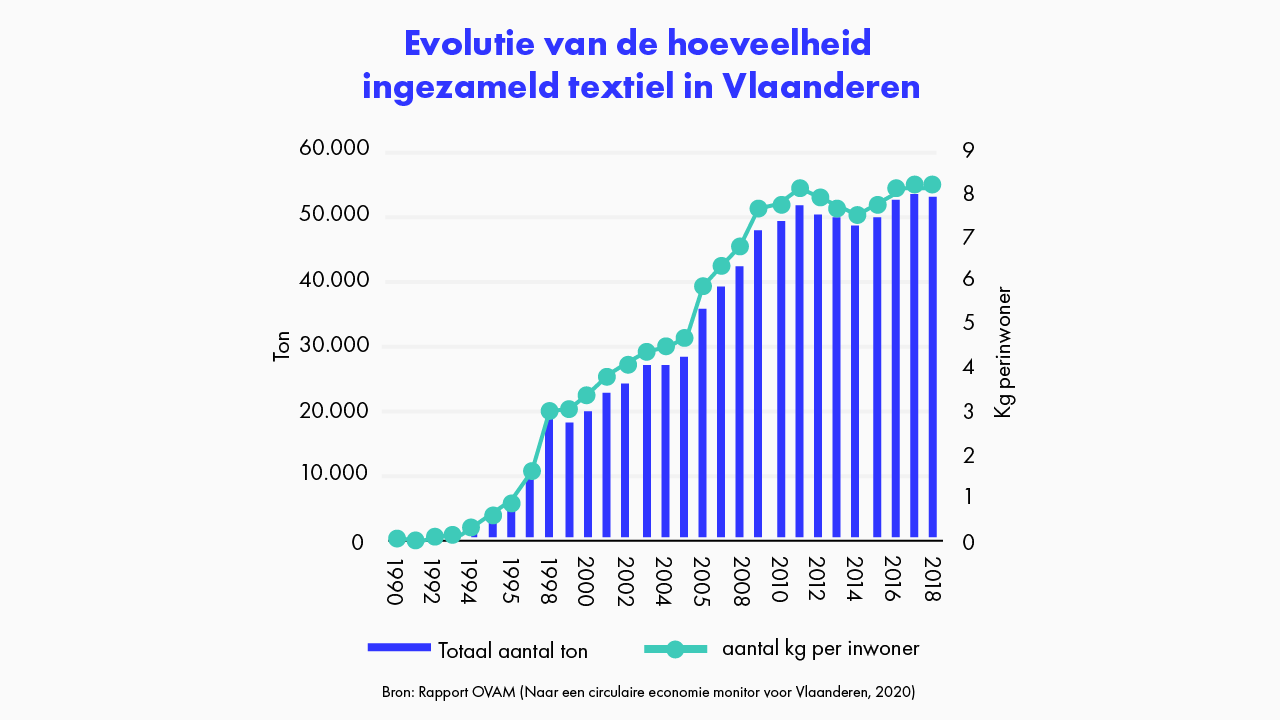
According to a European report, to which OVAM also contributed, it emerged that each European buys an average of 26 kg of clothing, footwear and household textiles per year. The way in which we deal with clothes has thus changed at a rapid pace and our consumption behaviour is not in tune with what we actually need to dress ourselves.
On average, we as Belgians (households and companies) throw away 14.8 kg of clothing per year. In 2018, 53.643 tons of consumer textile waste was collected in Flanders. This is an increase of 10% compared to 2013, when we threw away only 7,79 kg/inhabitant of textile waste and the curve continues to rise. This table gives a good representation of the increase over the years.

Of course, not all clothing waste comes from consumers. A lot of textile waste is also lost during the production of clothing. We call this pre-consumer textile waste. Did you know that on average 15 – 20% of the textile is already lost when the fabric is cut? So brands can also do their bit by avoiding as much textile waste as possible. They can do this by making smart choices during the design process or, for example, by using fabric surpluses from other productions. At COSH! you can discover several circular designers and brands that work with recycled fabrics!
Stores also face a problem. Because what should they do with the clothes they do not sell? It used to be cheaper for retailers in Belgium to just throw away unsold clothes. Fortunately, since 2019 this is no longer the case. From that point on, they no longer have to pay VAT on the pieces they give away to charities. However, donations can only be made to recognised local or supra-local governments (provincial level). This does not apply to charities in the Global South. The Neutral Syndicate for the Self-Employed, itself a requester of such a regulation, is already positive. According to them, since the rule was introduced, less clothing has been destroyed.

Is returning purchases online a good idea?
Online shopping is very common these days and COVID-19 has only contributed to that. Returning clothes bought online also creates a huge amount of waste. The Dutch documentary “op volle retouren” explains the problem very well. Ordering online is so easy, with a few clicks you can order dozens of new clothes. Often, you receive your order a few days later and if it does not fit, you can send it back free of charge. The documentary shows that no less than 13% of all orders are returned.
The process may sound familiar to you, but do you know what happens to the clothes after you send them back? Unfortunately, it is cheaper to burn the orders than to repack them… The unpacking, ventilating, cleaning, ironing and repacking process creates a huge cost and therefore a loss.
One of the ‘solutions’ are fulfilment centres. These centres bring the clothes back into saleable condition for web shops. This still saves some of the garments from the garbage bin, but it is not a structural solution. In addition, the discarded products that companies can no longer use after their return are also bought in bulk by buyers who export them worldwide.
The online practices of large chains also put great pressure on small and local traders who are expected to offer the same free service. At COSH, we therefore encourage you to buy from a physical retailer. That way you can enjoy personal service and try on the clothes beforehand. Moreover, this way you avoid miscommunication and unnecessary transport!
<qAlmost half of the Belgian used clothes we export are sent to Africa An enormous amount of textiles is shipped worldwide, including from Belgium. In 2017, the export of used clothes amounted to no less than 4.6 billion dollars. A profitable business, but do not confuse this with organisations that support good causes. From Belgium, 144,000 tons of textiles are exported abroad. It is still difficult to find figures that clearly show how much used clothing we export abroad. So there is a great need for transparency in the industry. Belgium and Luxembourg export most textiles to Cameroon, Turkey and Russia, so the textiles that we donate end up all over the world.

Shipping collected textiles to African countries harms the local economy and creates tons of waste. In the short term, it creates employment in trading second-hand clothes, but the cheap textiles are unfair competition for the local designers and tailors. In addition, the unused scraps of clothing often end up in the garbage dump afterwards.
In many other countries, the import of second-hand clothes from the West (also called mitumba) has an enormous impact on the local textile industry. For example, until the 1980s there was a flourishing local textile industry in Kenya that collapsed with the rise of mitumba.
Several African countries were even considering an import ban on second-hand clothing. The EAC (East African Community) started working on such an import ban in 2016, hoping to achieve a complete ban by 2019. To date, Rwanda is the only country that has maintained this import ban since 2018.
Evadam: “we send as little polyamide and polyester as possible to countries in Africa so that the waste can be better regulated there”. A big step in the right direction! It is important that these companies that focus on export are also aware of this.
When we donate clothes in containers, we seem to be easing our conscience on our own consumption behaviour. Meanwhile, we close our eyes to the dire consequences in the Global South. We send our clothes to countries that have minimal waste guidelines, shift the responsibility and package it as charity or offer employment.
COSH therefore advises you to try and recover used textiles yourself as much as possible. If you really can’t do anything with your old textile, don’t throw it in the rubbish! When you donate in textile collection bins, pay attention to the organisation you donate to and donate with care! Clean, high-quality clothing has a better chance of getting a sustainable second life.
Don’t know where to start? Use the step-by-step plan below as a helper during your next tidy-up!
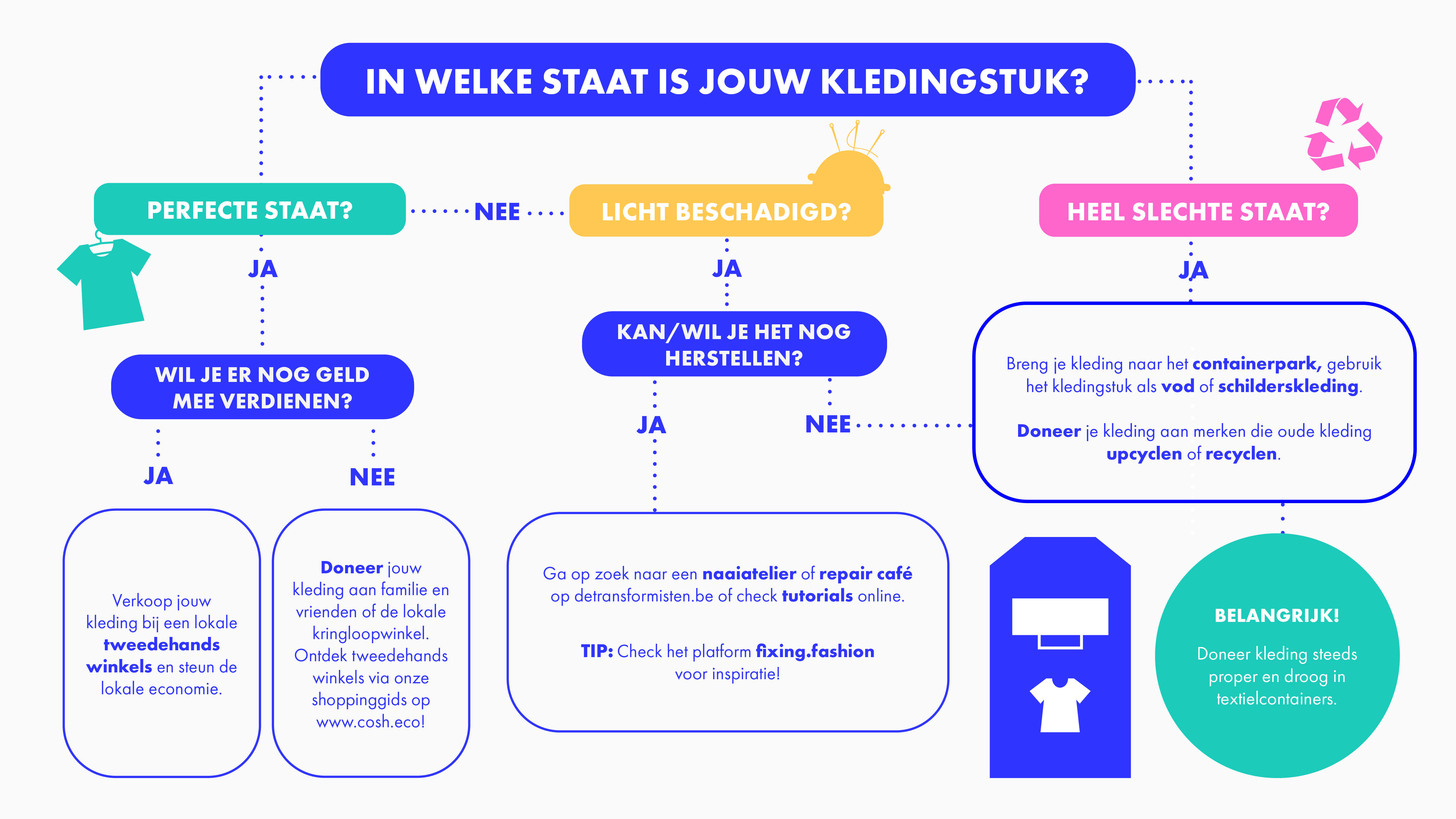
There is clearly still room for improvement when it comes to the collection and processing of our second-hand textiles. At the moment, as a consumer, it is often unclear where your garments end up once you donate them to textile bins. More transparency in the sector and clarity on the actual figures would already be a good step forward if we want to move towards a sustainable, circular fashion industry!
A city that does well in the field of textile waste: Rotterdam! During a visit in Rotterdam with the COSH! Team we saw the big steps Eigendraads (an organisation working on textile waste and recycling) wants to take and is actually taking. In the upcycling hub Blue City we saw a poster with clear figures for textiles, good figures that are traceable. This only promotes transparency. Something many cities could take an example from. |
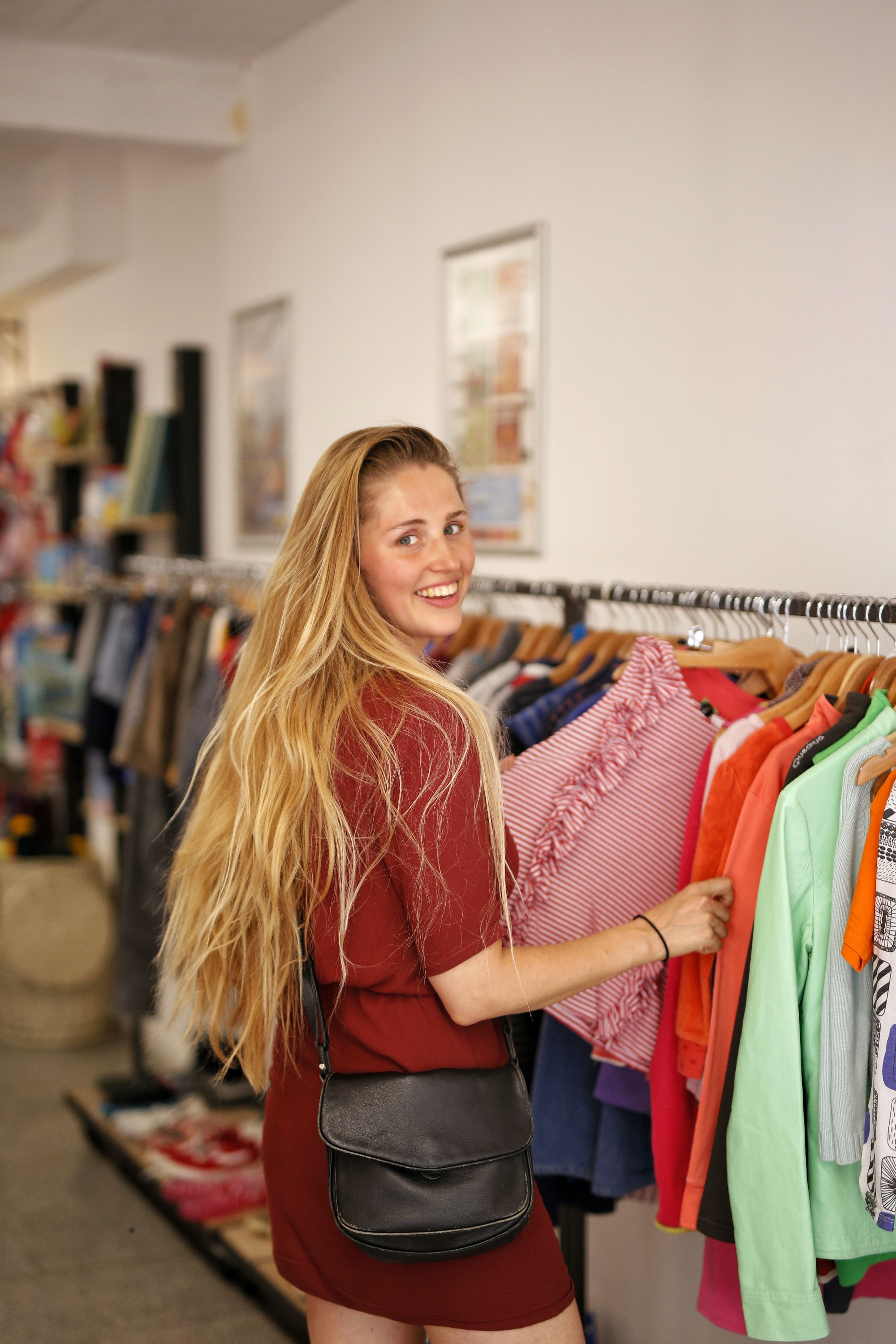
The advantages of ‘preloved fashion’
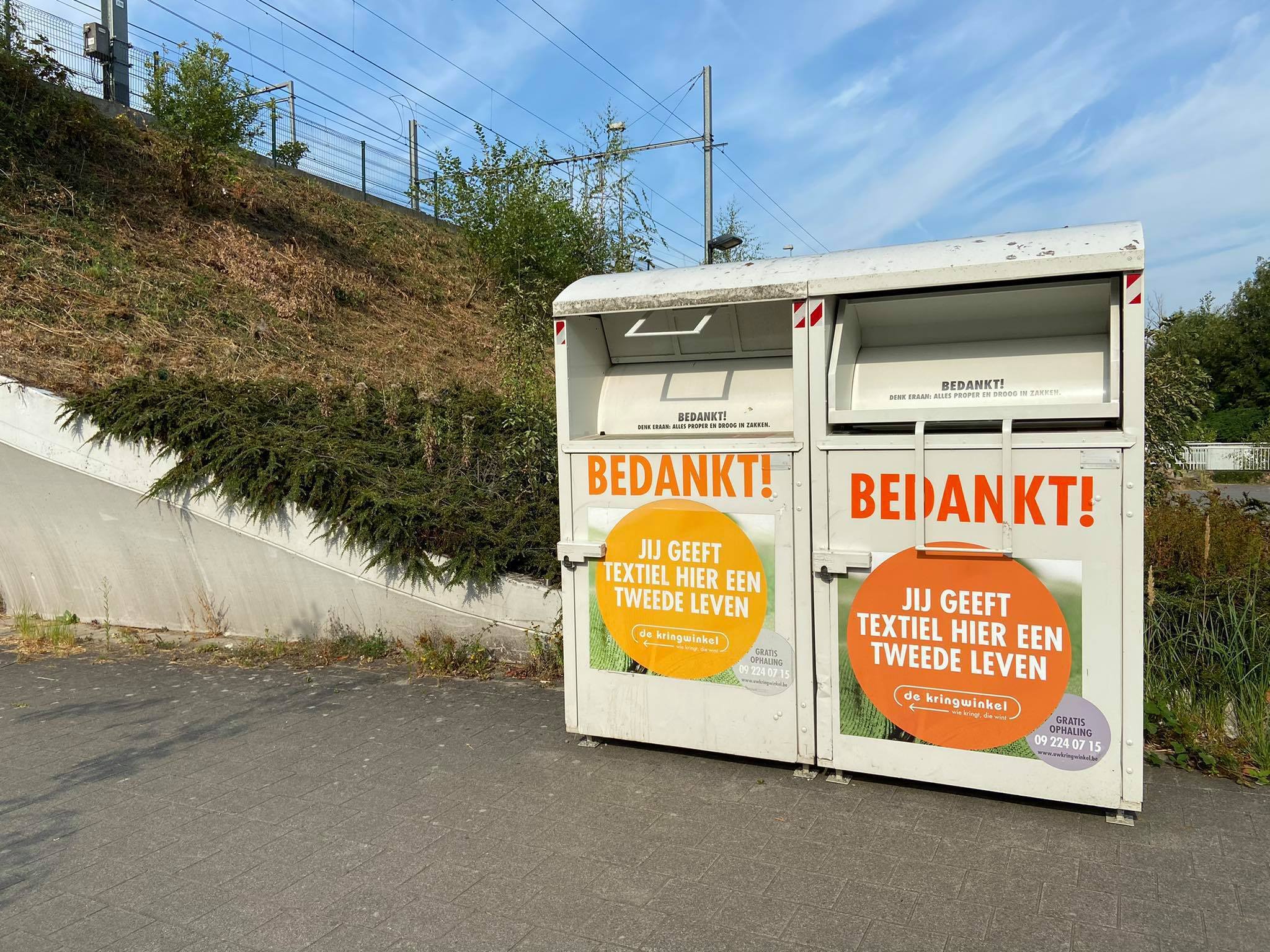
Where to donate textiles responsibly
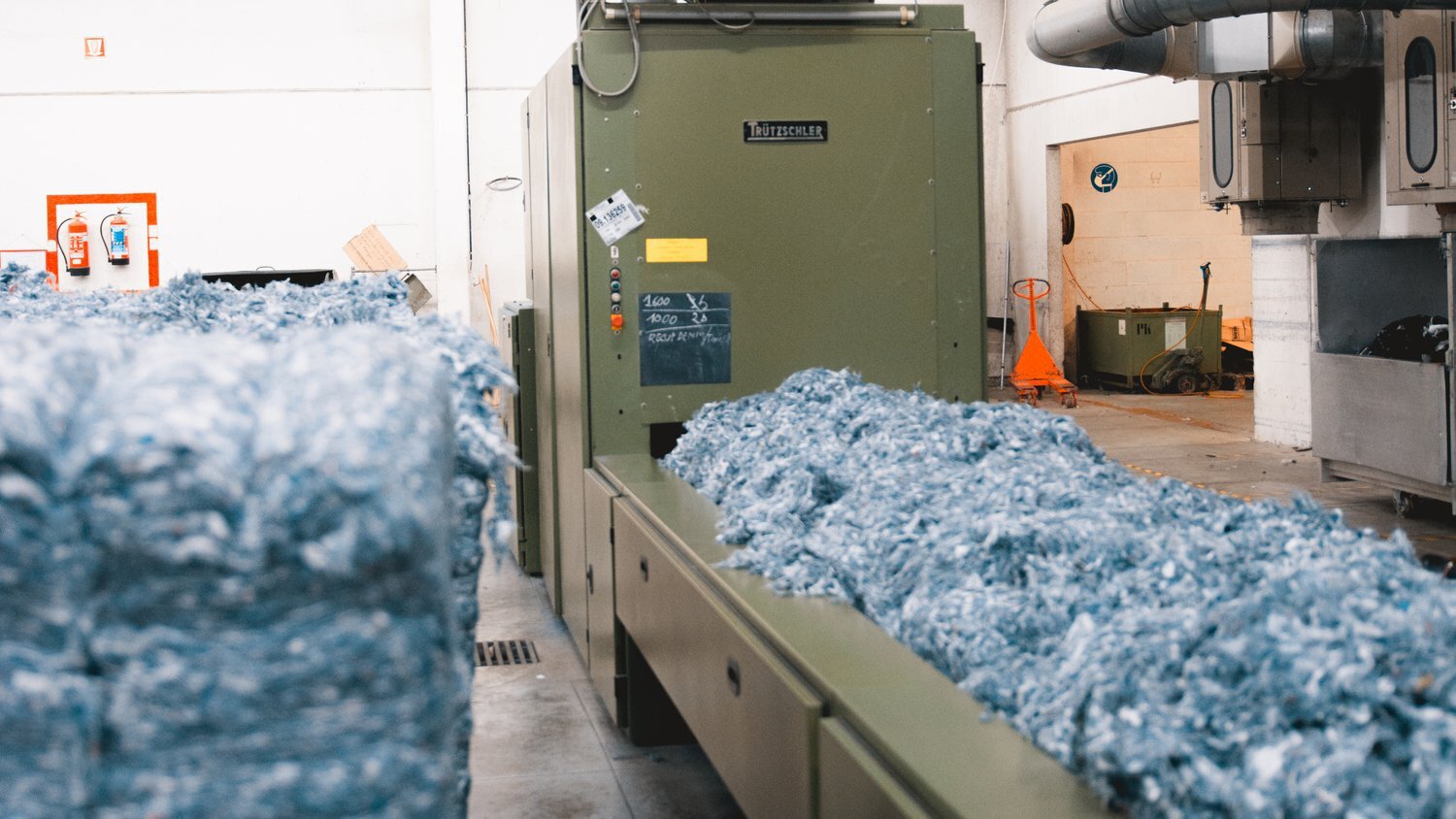
How does recycling of clothing work?
